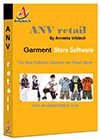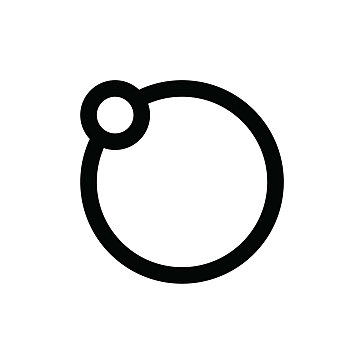Description

Retail Garment Store

Foko Retail

TRIMS
Comprehensive Overview: Retail Garment Store vs Foko Retail vs TRIMS
Here's a comprehensive overview of Retail Garment Store, Foko Retail, and TRIMS:
Retail Garment Store
a) Primary Functions and Target Markets:
- Primary Functions: Retail Garment Store solutions serve as point-of-sale (POS) systems tailored to the clothing industry. They typically handle inventory management, sales tracking, customer relationship management, and analytics to streamline retail operations.
- Target Markets: The primary market for these solutions includes small to medium-sized retail garment businesses, boutique owners, and large clothing retailers who require a specialized POS system for garment sales.
b) Market Share and User Base:
- Market Share: This is a niche area within the broader retail POS market. Many providers exist, leading to fragmentation without a dominant player.
- User Base: The user base spans from small individual boutique shops to larger chains, but specific usage data is often proprietary and not widely published.
c) Key Differentiating Factors:
- Industry-Specific Features: Capabilities tailored to variations in size, color, and style that are crucial for garment retailing.
- Customization: Often offers more customization options than generic POS systems to fit specific needs of retailers in the garment sector.
Foko Retail
a) Primary Functions and Target Markets:
- Primary Functions: Foko Retail is a communication and task management platform for retail teams. It focuses on task management, store compliance, and visual merchandising.
- Target Markets: Its primary market includes retailers looking to enhance internal communication and operational efficiency, often in geographically dispersed teams.
b) Market Share and User Base:
- Market Share: Foko Retail occupies a specialized niche within retail management solutions. They cater to businesses looking to improve communication and merchandising consistency across multiple stores.
- User Base: Mid-tier and large retail chains with multiple store locations are the primary users. Data on exact user numbers is typically not disclosed publicly.
c) Key Differentiating Factors:
- Focus on Communication: Prioritizes enhancing team collaboration and information sharing within retail environments.
- Visual Merchandising Tool: Provides a unique feature set aimed at improving store presentation and consistency across locations, which many competitors may not offer to the same extent.
TRIMS
a) Primary Functions and Target Markets:
- Primary Functions: TRIMS is a retail software platform that includes POS, customer management, supply chain, and inventory management functionalities. It operates as a more comprehensive retail management solution than typical POS systems.
- Target Markets: TRIMS targets mid to large-sized retail organizations across various sectors, including garment retail, that need integrated solutions for back-end and front-end operations.
b) Market Share and User Base:
- Market Share: As a broader retail solution, TRIMS competes with established global enterprise retail management systems.
- User Base: Large retail businesses spanning various sectors are the primary users, particularly those seeking comprehensive integration of retail activities.
c) Key Differentiating Factors:
- Comprehensive Solution: Unlike niche POS systems, TRIMS provides an all-in-one solution encompassing POS, ERP, and CRM functionalities.
- Scalability and Integration: Strong integration capabilities, allowing for scalability to accommodate the growth of business operations.
Comparison Summary
- Scope and Focus: Retail Garment Store solutions focus on POS-specific needs of clothing stores, Foko Retail emphasizes team communication, and TRIMS offers an extensive retail management platform.
- Market Presence: Each operates in distinct market segments, with Foko Retail uniquely positioned in retail team communications, while TRIMS delivers integrated management for larger businesses.
- User Differentiation: Retail Garment Store serves niche-specific retailers, Foko focuses on operational consistency, and TRIMS provides a holistic approach to managing retail functions.
These products serve different needs within the retail sector and are tailored to their unique target markets, differentiating themselves through specific functionalities and capabilities.
Contact Info

Year founded :
Not Available
Not Available
Not Available
Not Available
Not Available

Year founded :
Not Available
Not Available
Not Available
Canada
http://www.linkedin.com/company/foko-retail

Year founded :
2019
Not Available
Not Available
India
Not Available
Feature Similarity Breakdown: Retail Garment Store, Foko Retail, TRIMS
When comparing retail management solutions like Retail Garment Store, Foko Retail, and TRIMS, it's crucial to look at the core functionalities they offer, how their user interfaces (UI) are designed, and any unique features that distinguish them. While specific details may vary, here is a general breakdown based on common industry standards and known features:
a) Core Features in Common
-
Inventory Management:
- All three solutions typically offer robust inventory management capabilities, allowing users to track stock levels, manage reorders, and handle product variants.
-
Sales and Analytics:
- These solutions provide sales reporting and analytics to help retailers understand sales patterns, customer preferences, and performance metrics.
-
Point of Sale (POS) Integration:
- POS integration is a common feature, enabling seamless transactions and real-time data updates in the inventory and sales systems.
-
Staff Management:
- Features such as scheduling, task management, and performance tracking are usually included to help manage retail staff efficiently.
-
Customer Relationship Management (CRM):
- Basic CRM functionalities to track customer interactions, purchase history, and loyalty programs are typically included.
b) User Interface Comparison
-
Retail Garment Store:
- Generally, such solutions focus on simplicity to cater to non-technical retail staff. The UI might be more traditional, with straightforward navigation suitable for quick training and ease of use.
-
Foko Retail:
- Foko Retail often emphasizes a modern and mobile-first design due to its strong focus on retail operations and communications. Its UI might include more visually engaging dashboards and tools for team collaboration.
-
TRIMS:
- The UI for TRIMS can be more sophisticated, catering to larger operations with a need for detailed data analysis and reporting. It could offer more customization options for retailers looking to tailor the interface to specific needs.
c) Unique Features
-
Retail Garment Store:
- Retail Garment Store software might focus on niche features like garment-specific SKU management and support for seasonal collections, helping fashion retailers better manage their product lines.
-
Foko Retail:
- Foko Retail is known for its retail task management and team communication features, including real-time feedback and collaboration tools optimized for mobile use. These features are unique in enhancing operational efficiency through improved staff communication.
-
TRIMS:
- TRIMS might offer extensive ERP integrations and support for omnichannel retailing, enabling unified management of both online and physical store operations. Unique features could include deep analytics and tailored workflow automation.
Conclusion
Each solution offers a range of features designed to meet the diverse needs of the retail industry. While there are commonalities in core functionalities, differences in UI design and unique features can greatly influence which solution is most appropriate for a particular business. Potential users should consider their specific operational needs and user preferences when evaluating these platforms.
Features

Not Available

Not Available

Not Available
Best Fit Use Cases: Retail Garment Store, Foko Retail, TRIMS
To address your queries effectively, let's explore the best fit use cases for each of these retail solutions: Retail Garment Store, Foko Retail, and TRIMS, and how they cater to different industry verticals or company sizes.
a) Retail Garment Store
Use Cases:
- Type of Business: Retail Garment Store software is ideally suited for small to mid-sized retail businesses that specialize in selling clothing and apparel. It is designed to manage store operations, inventory, and sales transactions efficiently.
- Projects & Features: It is a great choice for businesses looking to streamline their in-store processes, track inventory levels, manage customer relationships, and handle point-of-sale operations. Retailers focusing on fashion and clothing items will benefit from its inventory management and sales reporting features.
Industry & Size Fit:
- This solution is best for small to medium retailers who need an affordable and straightforward retail management system. It caters particularly well to boutique stores or small garment chains.
b) Foko Retail
Use Cases:
- Type of Business: Foko Retail is preferred for large retail chains and businesses that have a significant footprint and require enhanced communication and task management across multiple locations.
- Scenarios: This platform is used primarily for internal communication, visual merchandising, team task management, and retail execution. It is beneficial for businesses that need real-time collaboration and visibility into store operations.
Industry & Size Fit:
- Foko Retail is tailored for larger enterprises in the retail sector including department stores, nationwide chains, and specialty retail chains that require strong intra-company communication capabilities. It is suitable for companies looking for a solution that enhances coordination and communication across various store locations.
c) TRIMS
Use Cases:
- Type of Business: TRIMS is designed for businesses requiring comprehensive retail software that covers everything from point-of-sale operations to supply chain management and customer relationship management (CRM).
- Projects: TRIMS is an excellent choice for businesses involved in detailed operations such as inventory control, financial accounting, reporting analytics, and integrated e-commerce solutions.
Industry & Size Fit:
- The software is adaptable for various business sizes, but it's particularly useful for medium to large businesses or those with complex retail operations. It serves diverse industry verticals such as apparel, footwear, and home goods, providing a scalable solution that grows with the business.
d) Catering to Different Industry Verticals or Company Sizes
- Retail Garment Store: Caters primarily to small and medium-sized fashion retailers aiming for cost-effective and simple store operation management.
- Foko Retail: Focuses on larger retail companies that require robust communication and coordination tools across multiple locations, making it suitable for chains and department stores.
- TRIMS: Offers a comprehensive suite of retail management features catering to medium to large enterprises with complex operational needs across various sub-sectors in the retail industry.
Each solution provides unique strengths, and the best choice will depend on the specific needs of the retailer, the scale at which they operate, and the complexity of their retail operations.
Pricing

Pricing Not Available

Pricing Not Available

Pricing Not Available
Metrics History
Metrics History
Comparing undefined across companies
Conclusion & Final Verdict: Retail Garment Store vs Foko Retail vs TRIMS
When deciding between Retail Garment Store, Foko Retail, and TRIMS for managing a retail garment business, it's essential to evaluate each based on their features, pricing, ease of use, scalability, and customer support. Here's a comprehensive conclusion and final verdict for each:
Best Overall Value
Verdict: Foko Retail appears to offer the best overall value due to its strong feature set, ease of use, and excellent customer support, which are crucial for enhancing retail operations and improving communication and collaboration among team members.
Pros and Cons
Retail Garment Store
- Pros:
- Specifically tailored for garment retailers, offering industry-specific features.
- Provides robust inventory management tools to handle large catalogues.
- May offer competitive pricing for small to medium-sized businesses.
- Cons:
- The limited scalability might not suit very large operations.
- May require more initial setup and training time.
- Customer support might not be as responsive or flexible compared to larger players.
Foko Retail
- Pros:
- User-friendly interface that's easy to navigate for teams of varying technical skill levels.
- Excellent for enhancing team communication and performance with visual merchandising and task management features.
- Scalable solution suitable for small to large enterprises.
- Cons:
- Might be more expensive than competitors, potentially limiting for smaller businesses with tight budgets.
- Some users might find it lacking in deeper analytics or integrations with third-party tools.
TRIMS
- Pros:
- Offers extensive reporting and analytics features beneficial for data-driven decisions.
- Strong inventory management capabilities designed for garment retailers.
- Flexible and customizable to fit specific business needs.
- Cons:
- Can be complex to implement and use, requiring more training for staff.
- Potentially higher costs for customization and advanced features.
- Customer service experience can vary, with some users finding it less responsive.
Recommendations
-
For small to medium-sized businesses that prioritize ease of use and strong communication features, Foko Retail is a suitable choice due to its user-friendliness and comprehensive support.
-
Retail Garment Store may be ideal if budget constraints are a primary concern and the focus is on industry-specific functions without needing extensive scalability.
-
TRIMS is recommended for businesses that rely heavily on data analytics and reporting and have the resources to invest in a more complex system that can be extensively customized.
Ultimately, the decision should be based on the specific needs and goals of the business. Consider factors like budget, team size, required features, and long-term scalability when choosing between Retail Garment Store, Foko Retail, and TRIMS. Evaluating any free trials or demos might also provide practical insights into which system aligns best with your business operations.